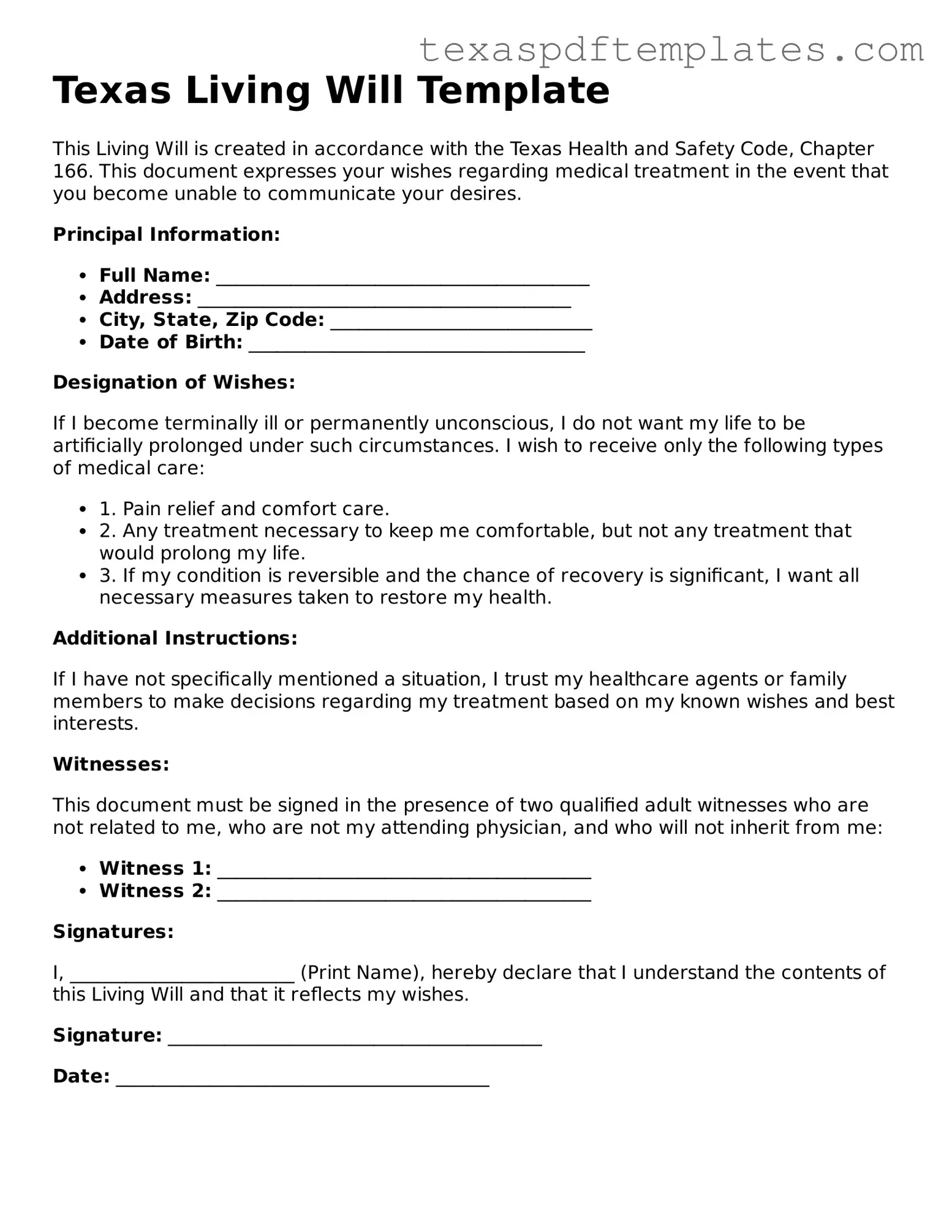Texas Living Will Template
This Living Will is created in accordance with the Texas Health and Safety Code, Chapter 166. This document expresses your wishes regarding medical treatment in the event that you become unable to communicate your desires.
Principal Information:
- Full Name: ________________________________________
- Address: ________________________________________
- City, State, Zip Code: ____________________________
- Date of Birth: ____________________________________
Designation of Wishes:
If I become terminally ill or permanently unconscious, I do not want my life to be artificially prolonged under such circumstances. I wish to receive only the following types of medical care:
- 1. Pain relief and comfort care.
- 2. Any treatment necessary to keep me comfortable, but not any treatment that would prolong my life.
- 3. If my condition is reversible and the chance of recovery is significant, I want all necessary measures taken to restore my health.
Additional Instructions:
If I have not specifically mentioned a situation, I trust my healthcare agents or family members to make decisions regarding my treatment based on my known wishes and best interests.
Witnesses:
This document must be signed in the presence of two qualified adult witnesses who are not related to me, who are not my attending physician, and who will not inherit from me:
- Witness 1: ________________________________________
- Witness 2: ________________________________________
Signatures:
I, ________________________ (Print Name), hereby declare that I understand the contents of this Living Will and that it reflects my wishes.
Signature: ________________________________________
Date: ________________________________________
